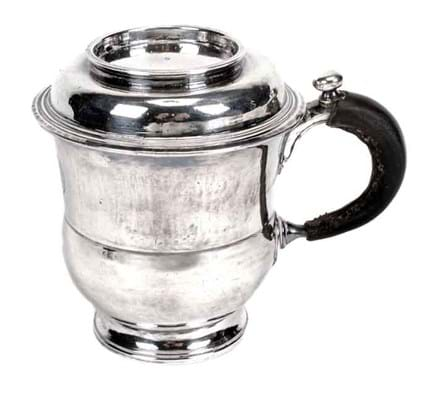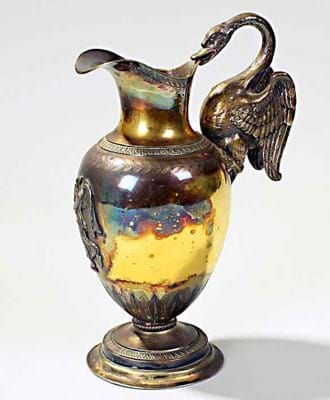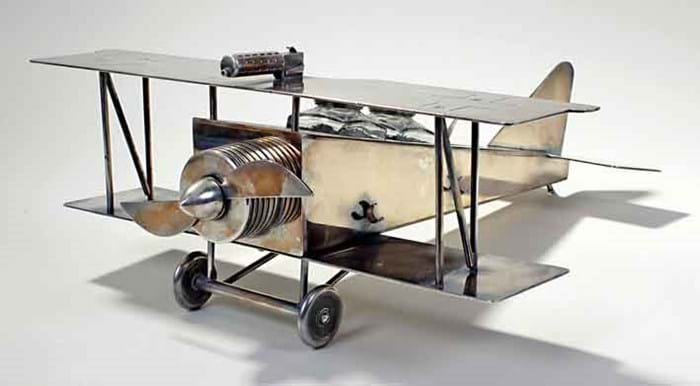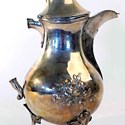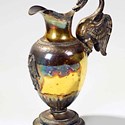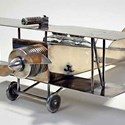Marked for Thomas Folkingham, London 1714 to both cup and cover (the latter reversing to form a saucer), the 4in (10cm) baluster-shaped vessel was also distinctive for a ball-capped leather-bound handle. The armorial is probably for Miss Bagot.
Covered chocolate cups of this period are rare, although another of the same simple form by Simon Pantin I, hallmarked 1709, has appeared on the market twice in recent memory: at Bonhams in 1995 and as part of the Charles L. Poor collection of early English silver sold by Sotheby's New York in 2005, when it took $22,500.
Dreweatts' example was in fine condition with the marks a little rubbed but clear and two silver solder patches to the base. Estimated at £3000-5000 for the sale on June 13, it sold for £20,000.
The buyer's premium 22%
Stockholm Silversmith
A late entry to the catalogue offered by Chiswick Auction Rooms on June 3 was an 18th century Swedish silver coffee pot with marks for Pehr Zethelius of Stockholm.
Zethelius was a pioneer of the Gustavian style, but this 12in (30cm) high vessel (missing its wooden handle) is very typical of Sweden's restrained rococo style - a mirror smooth surface punctuated only by a single repoussé floral spray and a delicate flower and petal finial.
Auctioneer William Rouse described its arrival in the West London salerooms: "A gentleman walked in and said he wanted £7000 for a coffee pot without a handle. We initially said that we thought he was crazy but he said it was a rare thing and the silversmith was the Swedish equivalent of Paul Storr. We checked this out, agreed it was rare and took a punt."
It paid off, with bidding arriving via the-saleroom.com and on commission - the latter winning at £7800.
The buyer's premium was 20%
French and German Silver
If 18th century Swedish silver is a rare visitor to a UK regional saleroom then French Empire material is not too far behind.
An 8in (20cm) high, 18oz silver gilt jug seen at Lockdales of Ipswich on June 13-14 was struck for France 1798-1809 and the maker's mark BJCO in a diamond.
Its neoclassical design included a relief-decorated maiden, leaf-engraved borders and a handle formed by a swan holding the lip by its beak. Brisk bidding saw it more than double hopes at £1250.
Also a the sale was a commercial example of early 20th century German silversmithing, an electroplated inkstand modelled as a 14in (36cm) bi-plane with mounted machine gun and moving propeller.
Included in the 'cockpit' are two inkwells, while the fuselage provides a stamp compartment and pen rack. The tip of the wing is marked for Franz Reichenberg, the Berlin firm which specialised in these Great War era novelties.
Always popular across a number of different collecting fields, it took £1600 at Lockdales.
The buyer's premium was 15%

